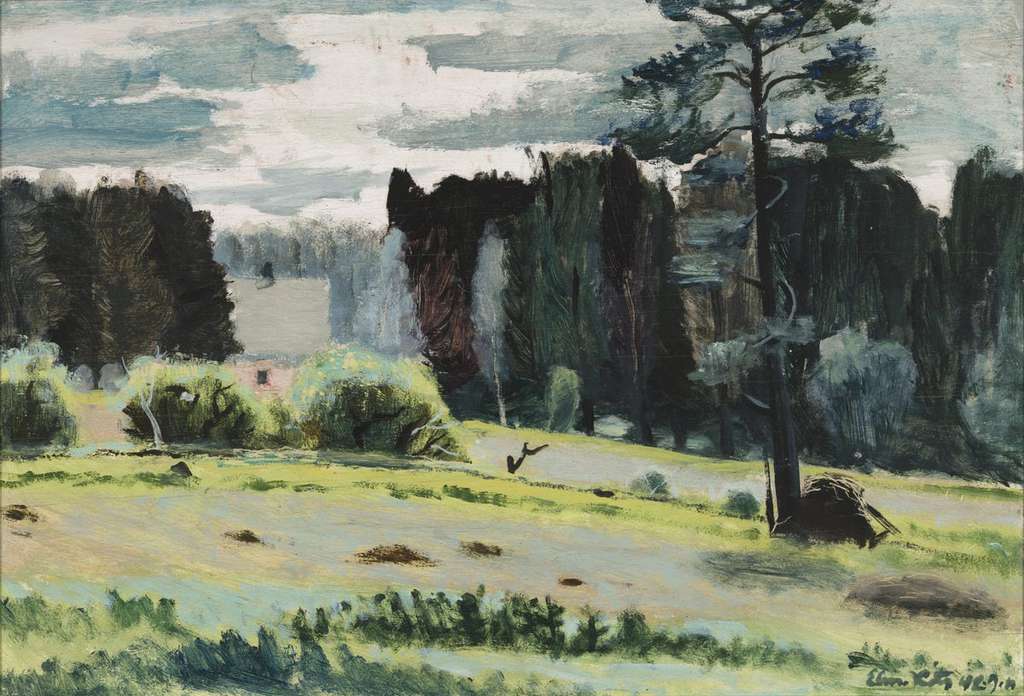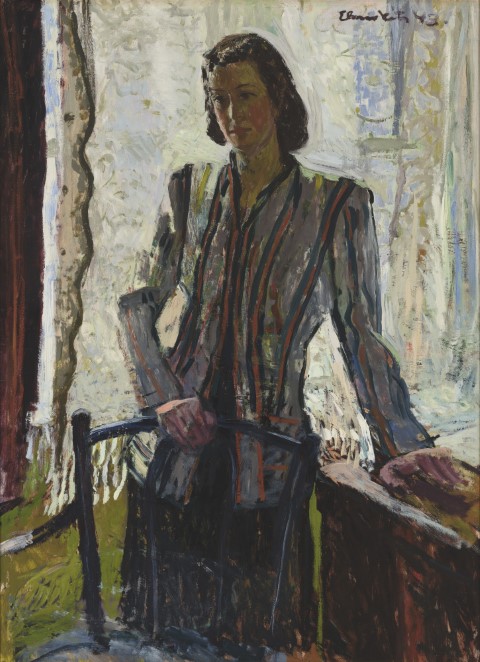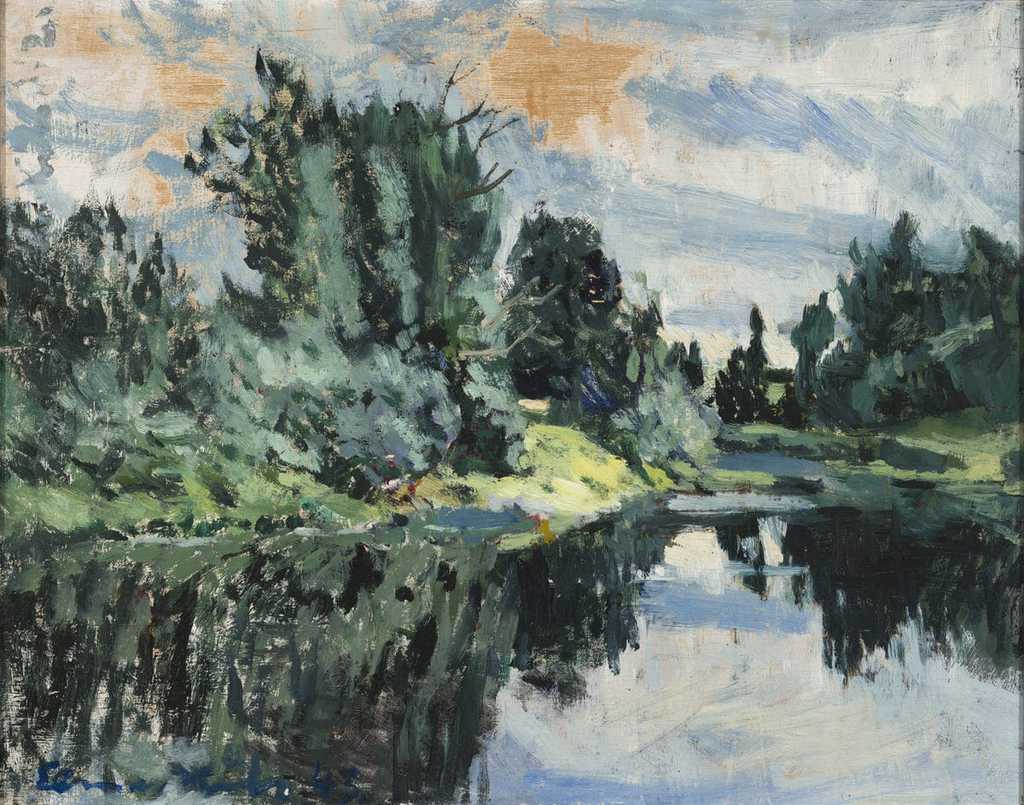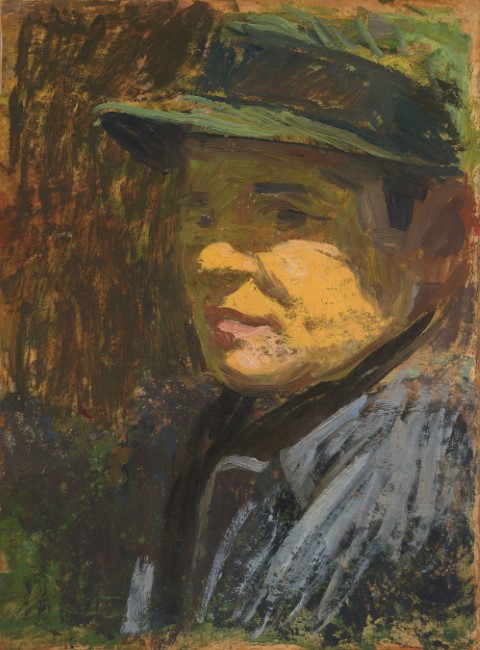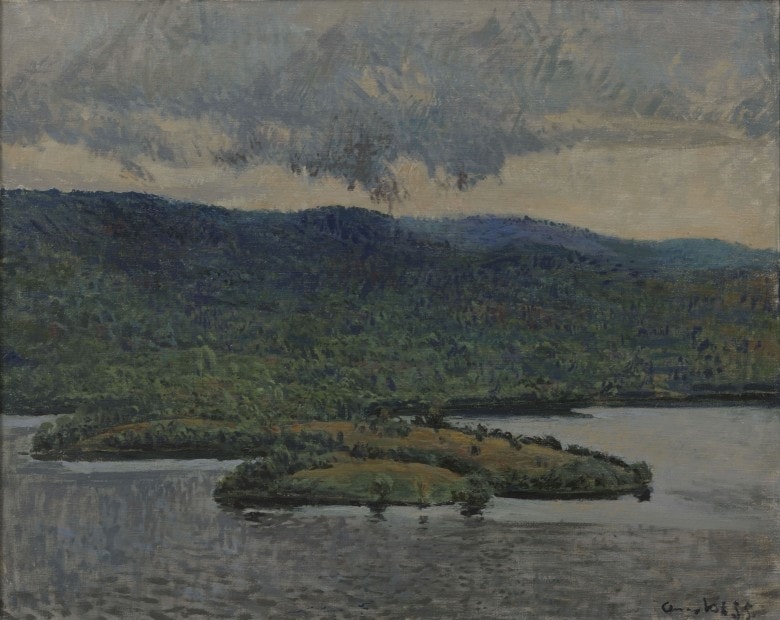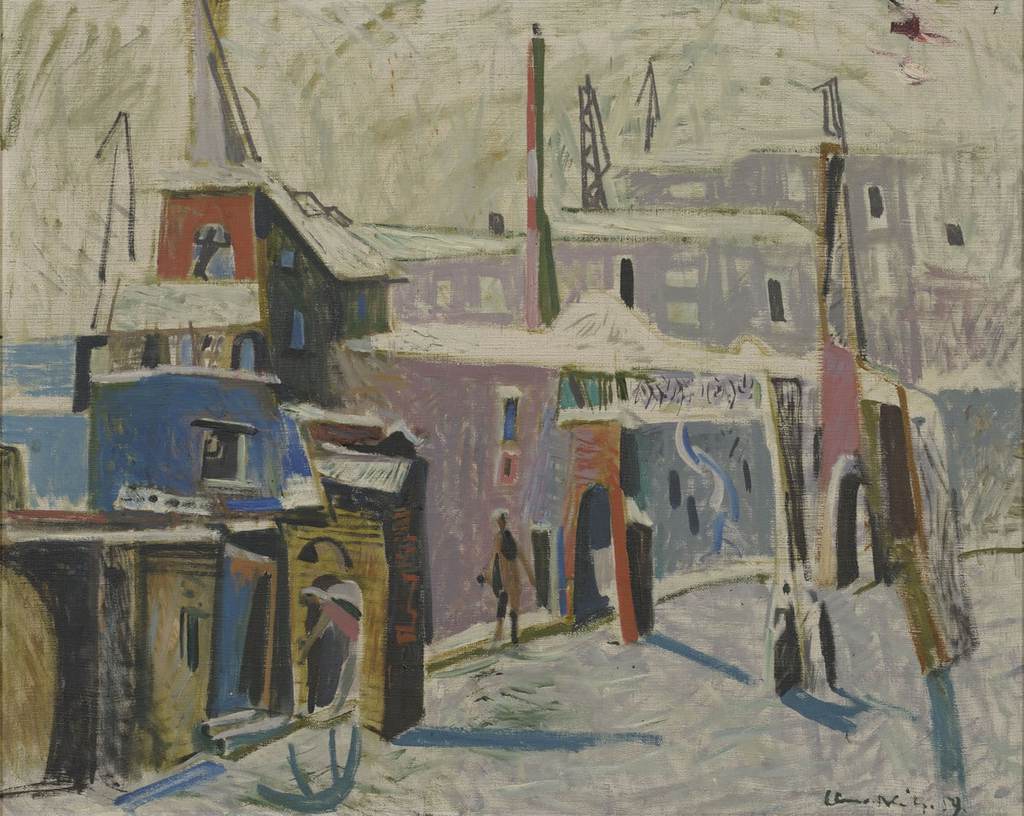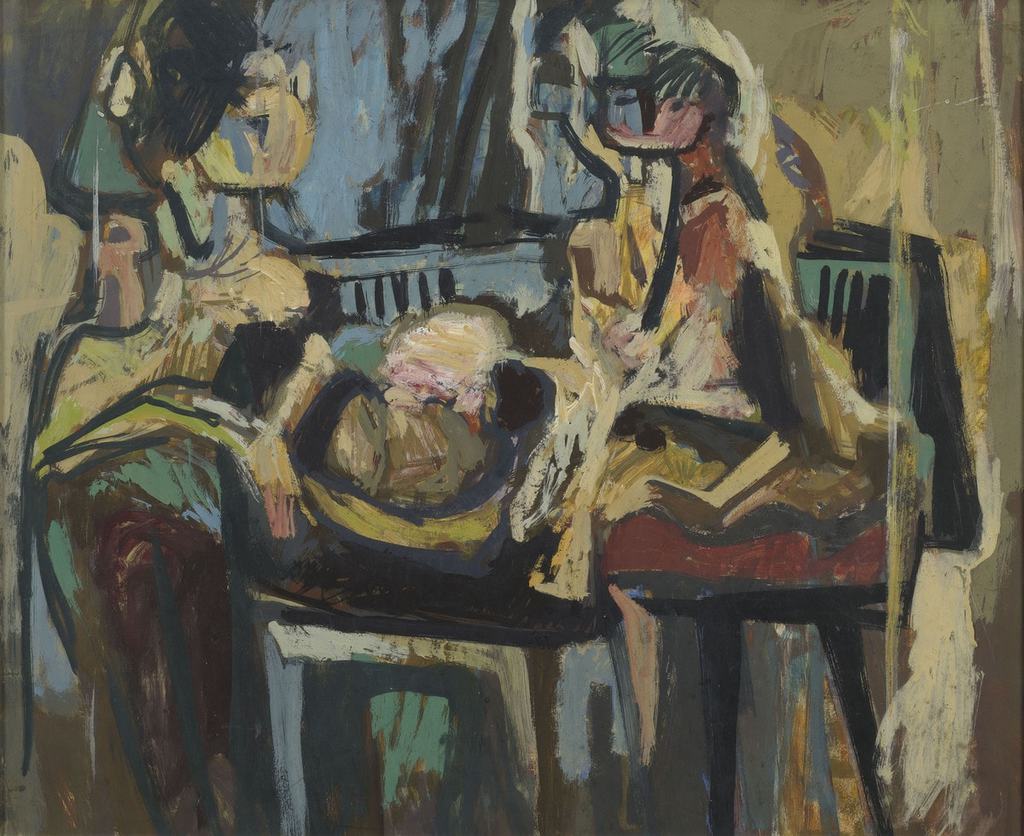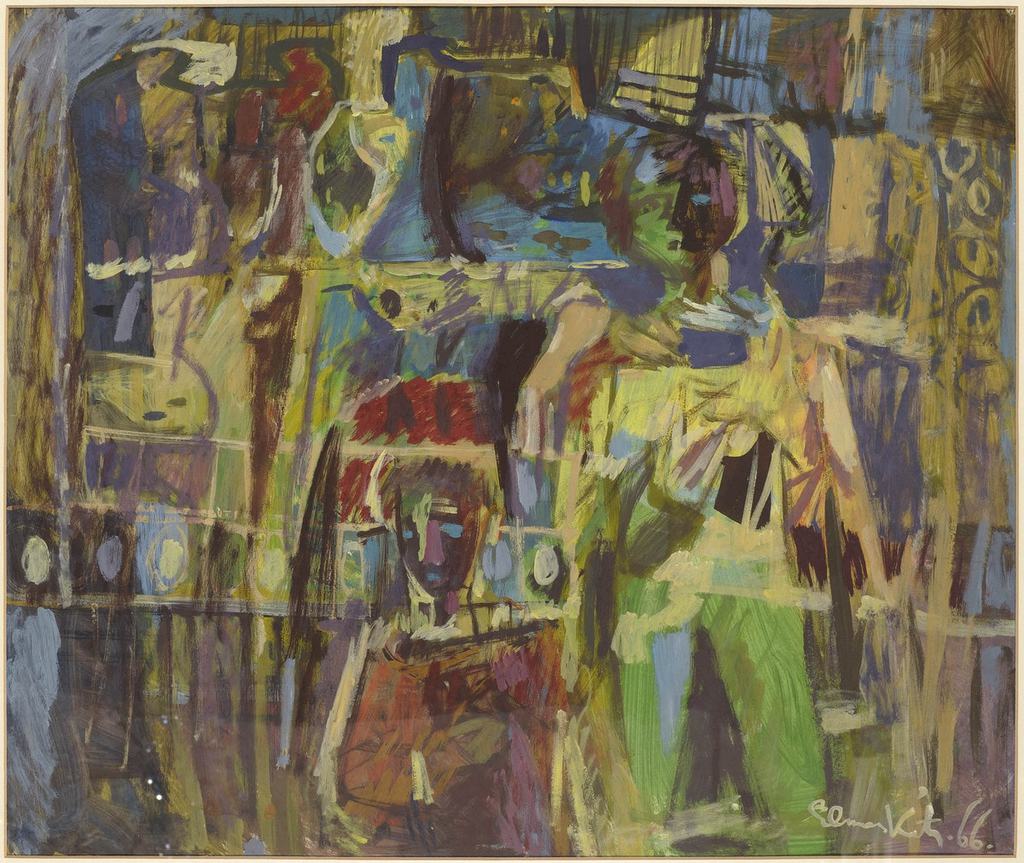Elmar Kits has been called Estonia’s Picasso since his creative range was very abundant and broad. His body of creative work includes impressionist, postimpressionist, realistic, semiabstract and abstract works. In addition to oil paintings, Kits has also created several important monumental paintings.
Kits became a notable artist at the end of the 1930’s already immediately after completing school at Pallas. He also was subjected to attacks in the 1940’s from the Soviet regime that occupied Estonia when he was accused of formalism, in other words paying more attention to questions of form in a work of art instead of focusing on thematic questions. Thereafter Kits’s style became more realistic and he also gained official acclaim, especially after his Karelian series of paintings in the mid-1950’s. Kits’s style became much more free in the 1960’s and it started approaching abstract art in the middle of the decade. Exhibitions held in 1966 in Tartu and Tallinn brought dozens of semiabstract works before the public, which also meant an important step in terms of artistic policy since that kind of art was not officially held in favour. Kits continued to work in a similar style to the end of his life.

